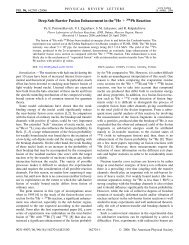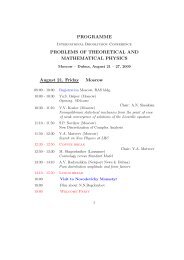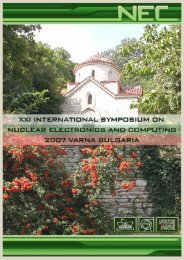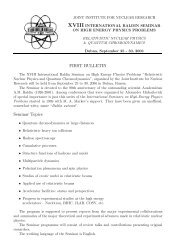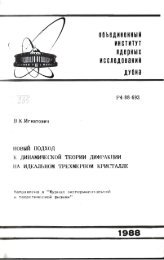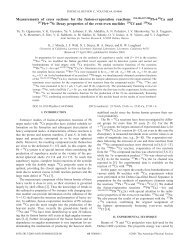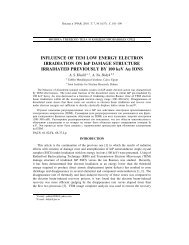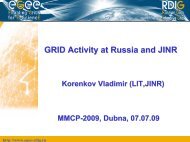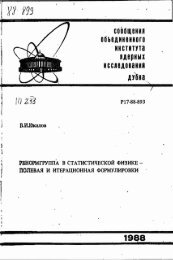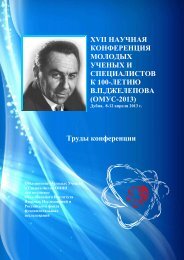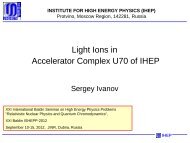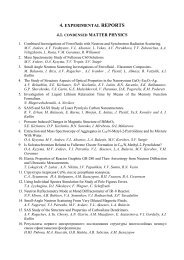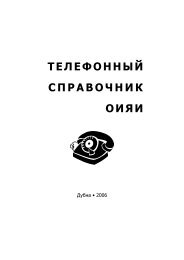Joint Institute for Nuclear Research Relativistic ... - Index of - JINR
Joint Institute for Nuclear Research Relativistic ... - Index of - JINR
Joint Institute for Nuclear Research Relativistic ... - Index of - JINR
Create successful ePaper yourself
Turn your PDF publications into a flip-book with our unique Google optimized e-Paper software.
POSSIBLE DEVELOPMENT OF CUMULATIVE PARTICLE<br />
EXPERIMENTS WITH NICA FACILITY<br />
B.F. Kostenko 1† , J. Pribish 2 and V.P. Filinova 1<br />
(1) <strong>Joint</strong> <strong>Institute</strong> <strong>for</strong> <strong>Nuclear</strong> <strong>Research</strong><br />
(2) Technical University, Košice, Slovakia<br />
† E-mail: bkostenko@jinr.ru<br />
After collisions with projectiles, density fluctuation <strong>of</strong> nuclear matter may turn into<br />
multibaryon (MB) with chiral symmetry restored in its interior. This method <strong>of</strong> observation<br />
<strong>of</strong> the chiral phase transition has its advantages due to a relatively moderate number<br />
<strong>of</strong>secondary particles tobemeasured. Wesuggest to useacumulative particle asatrigger<br />
<strong>for</strong> registration <strong>of</strong> MB decay products. Estimations show that its appearance is a signature<br />
<strong>of</strong> ”deep cooling” <strong>of</strong> the MB, which brings it close to the unexcited state [1]. This<br />
gives a chance to separate MB from the secondary particle background. For separation <strong>of</strong><br />
events with MB production, a role <strong>of</strong> intranuclear collisions <strong>of</strong> MB decay products should<br />
also be evaluated. We study experimental data taken (with a view to observation <strong>of</strong> the<br />
color transparency and the short range correlations) with the EVA spectrometer at BNL<br />
[2, 3] as a simplified <strong>for</strong>m <strong>of</strong> the problem. Analysis <strong>of</strong> intranuclear interactions be<strong>for</strong>e<br />
and after hard scattering <strong>of</strong> protons on SRC leads to unexpected conclusion that wave<br />
function <strong>of</strong> 12 C has an admixture <strong>of</strong> states reminding a fusi<strong>for</strong>m body.<br />
References<br />
[1] B.F. Kostenko, J. Pribish, Phys. Atom. Nucl. 75, 888 (2012).<br />
[2] J. Aclander et al., Phys. Lett. B453, 211 (1999).<br />
[3] A. Tang et al., Phys. Rev. Lett. 90, 042301 (2003).<br />
73



